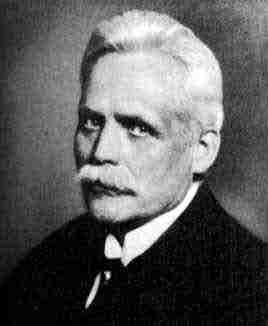Wilhelm Wien

Wilhelm Wien (January 13, 1864 – August 30, 1928) was a German physicist who, in 1893, used theories about heat and electromagnetism to compose Wien's Law, which relates the maximum emission of a blackbody to its temperature.
As Max von Laue wrote of Wien, "his immortal glory" was that he "led us to the very gates of quantum physics".
Wien was awarded the Nobel Prize for Physics for 1911. A crater on Mars is named in his honor.
Early life
Wien was born at Fischhausen, in East Prussia as the son of landowner Carl Wien. In 1866, his family moved to Drachstein, in Rastenburg, East Prussia.
Education
In 1879, Wien went to school in Rastenburg and from 1880-1882 he attended the city school of Heidelberg. In 1882 he attended the University of Göttingen and the University of Berlin. From 1883-85, he worked in the laboratory of Hermann von Helmholtz and, in 1886, he received his Ph.D. with a thesis on the diffraction of light upon metals and on the influence of various materials upon the color of refracted light.
